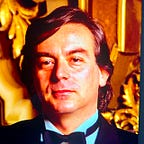Evolution of the Modern Orchestra
Maestro Alessandro Siciliani is music director of the Opera Project Columbus in Ohio. Alessandro Siciliani has three decades of experience in conducting orchestras worldwide, and has received numerous honors.
The historical backdrop of orchestra goes back to the beginnings of Western music. The word “orchestra” was derived from a Greek word that referred to the front part of the theater stage, reserved exclusively for the chorus and instruments.
The modern orchestra was given its fundamental structure in the early 1600s. Through the 17th century, each orchestra had around 18 to 20 members. Composers were generally performers, usually on the violin or harpsichord. Violins became the essential string instrument during this time.
In the 18th century, the number of personnel expanded, as French horns, trumpets, and trombones became customary instruments. Throughout the next centuries, instruments were added and removed, and the modern orchestra, consisting of strings, brass, woodwinds, and percussion, came to fruition.
